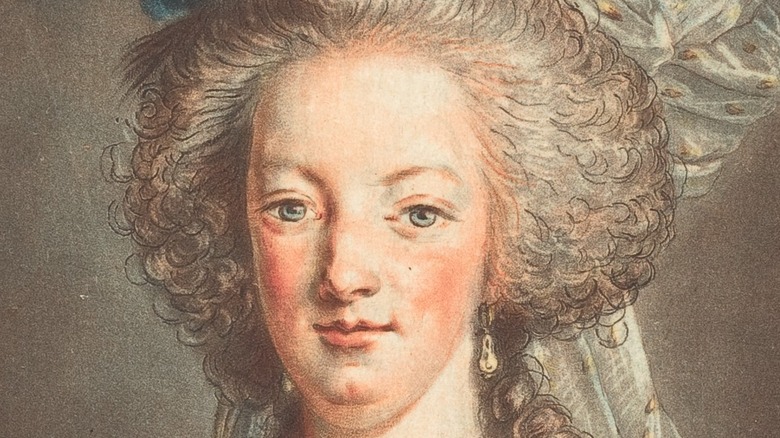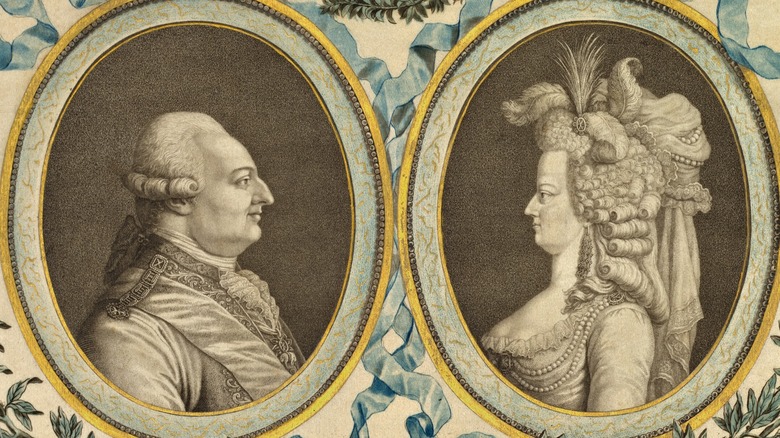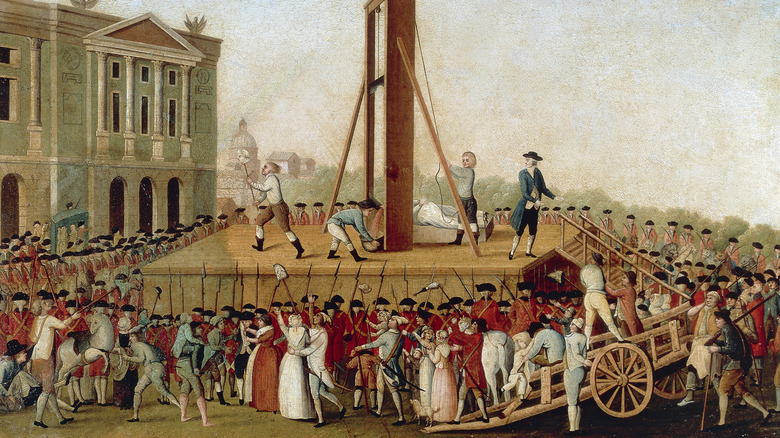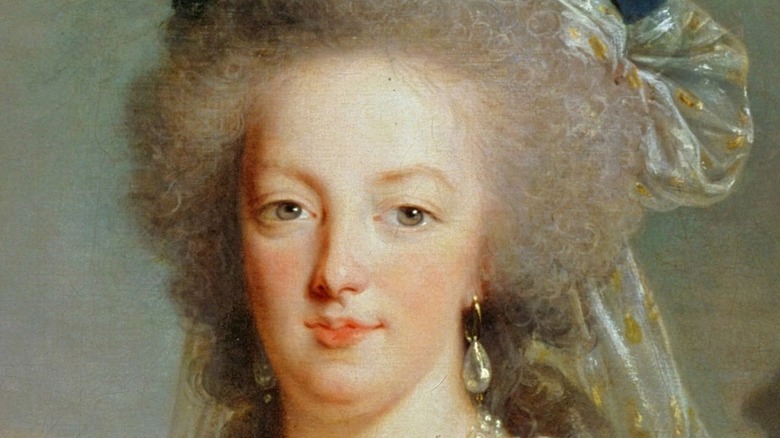Marie Antoinette's Last Words Before Her Execution Were Unexpectedly Cordial
There are many revolutions recorded throughout history, the American Revolution, the Russian Revolution, the Arab Spring, and the Chinese Communist Revolution to name a few. Another revolution that makes it into most history books worldwide is the French Revolution. According to Britannica, it was one of the most violent revolutions of its time period, and was caused by a perfect storm of problems: financial issues due to preceding wars, high-class (bourgeoisie) French citizens frustrated by political exclusion, lower-class citizens wanting to end the feudal system, food shortages, and new ideas stemming from philosophers all across Europe. Meetings among government leaders, aristocrats, and notables from the bourgeoisie didn't exactly help ease the tension.
Some deputies representing commoners created their own organization. King Louis XVI convinced those representing clergy and nobles to join the new National Constituent Assembly, while simultaneously preparing troops against it, according to Britannica. This assembly did away with the feudal system and allowed for more voting eligibility among citizens.
Meanwhile, food supplies continued to dwindle. On July 14, 1789, Parisians rioted at the Bastille, a prison that they viewed as a symbol of the monarchy. July 14 is known as Bastille Day in France.
Marie Antoinette married King Louis XVI
The National Constituent Assembly tried to create a government wherein the king or monarch could share power with such an assembly, but King Louis XVI's advisors had their own ideas. War also broke out between France, Austria, and Austria's ally Prussia. King Louis XVI's wife Marie Antoinette, who was born in Austria, suggested that her brother, Holy Roman Emperor Leopold II, invade France to help counter the revolution. That did not happen and the royal family was imprisoned in 1792. By the end of that year, another assembly formed called the National Convention and planned to end the monarchy in France. The new assembly charged the king with treason and beheaded him with the guillotine in January 1793 (via Britannica).
The assembly leaders moved Marie Antoinette to the Conciergerie, a large complex along the Seine River in Paris. According to the Conciergerie's website, she was separated from her family and isolated from other prisoners. Two months later, the National Convention accused Antoinette of financial squandering, treachery, and even incest with her son, Louis XVII. Despite her emotional appeals to the citizens, she was executed in the same way as her husband King Louis XVI at Place de la Concorde in Paris.
Marie Antoinette was executed by guillotine
Marie Antoinette remained calm when she was taken to the guillotine on October 16, 1793. According to World History, her last words were directed toward her executioner, after she accidentally stepped on his foot: "Pardon, monsieur. I did not do it on purpose," Antoinette said. Today, Place de la Concorde is a lively pedestrian area in the heart of Paris, just walking distance from the Louvre Museum and the Arc de Triomphe. It has fountains and an Egyptian obelisk which is over 3,000 years old. There is little indication that the place was originally used for revolutionary executions.
There is another quote more commonly associated with Antoinette. As previously mentioned, failed crops caused food shortages among French citizens in the years leading up to the deaths of Antoinette and the king. A rumor spread that upon being informed about starving citizens, Antoinette replied, "Let them eat cake." Such a statement enraged her subjects as they pictured her luxurious life in comparison to their struggles. But multiple historians believe this to be out of character for the queen, as she held charitable causes in high regard throughout her life. The phrase had also already existed before Antoinette supposedly said it. Other historical figures have been attached to similar statements as well (per History). Perhaps Antoinette's cordial, gentle last words are more reflective of her personality and legacy than "let them eat cake."
Thousands of people died during the French Revolution
The French Revolution was disturbingly violent. Other than Marie Antoinette and King Louis XVI, History states that around 17,000 people were executed by the end of the revolution. A driving force behind a substantial number of these executions was Maximilien Robespierre. He led the Committee for Public Safety in 1793. He ordered for those he deemed political enemies to be executed, often with the guillotine. The National Convention eventually turned on him and he was executed along with dozens of his allies in 1794.
Despite the anger toward Antoinette — largely due to false rumors spread throughout the general public — a statue of her and King Louis XVI were created in the 1830s and are still located at the Basilica of St. Denis in the town of St. Denis north of Paris. The couple's remains are located there as well. She is still a well-recognized figure of French history and maybe even viewed with a little more sympathy now than during her lifetime.



